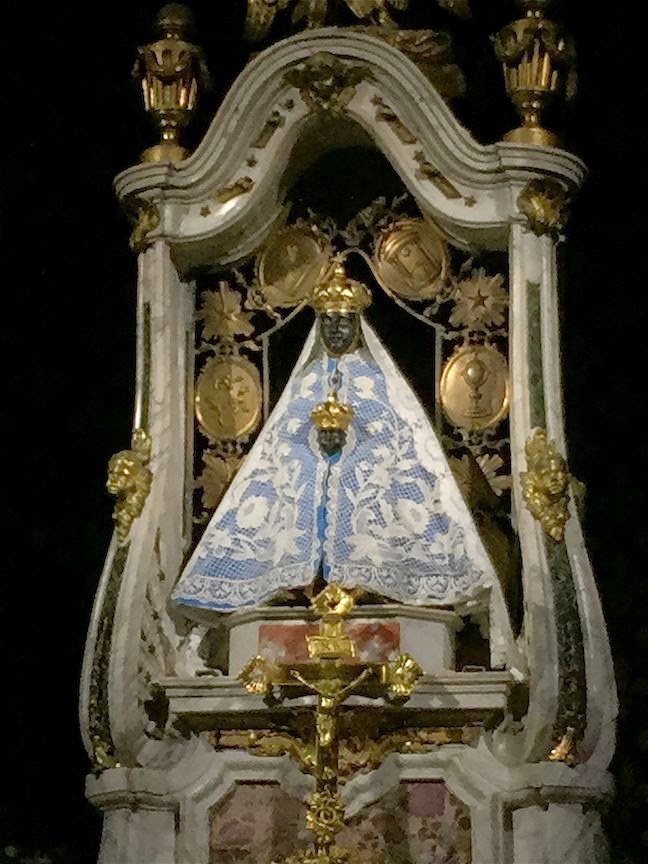On Thursday, March 26, I left Geneva and “went solo” for the
first time since the beginning of our training. As I’ve said, I was feeling
more and more like myself, and about ready to get back to normal life. The idea
was to walk the first 90 km of the “Chemin de St. Jacques” (the French part of
the Santiago de Campostela pilgrimage trail). I’d already done the middle
section – from Aumont-Aubrac to Cahors (well – all except for one day missing
in the middle), but I wanted to do the “official” start, from Le Puy en Velay
to Aumont-Aubrac. I thought I was leaving all the Ebola work behind, but –
apparently, not so fast.
I got to Le Puy
in the evening, dropped off my stuff, and
went for a walk – mostly to the cathedral, since that was the only place still
open. Almost the first thing I saw was a Latin inscription in a courtyard
that
had something to do with medicine and doctoring (there is mention of
Hippocrates over on the right, at the end); I found out later it was an
inscription about the healing properties of the waters of the well. Then, once
inside the church, I came across a large painting
showing a procession of
townspeople giving thanks to the local Madonna for delivering them from the
plague in 1630. But, wait – something is different about this Madonna…. Ah, yes
– she’s black, and so is the baby Jesus on her lap, as is apparently relatively
common in this region.
Then, over to the left of the choir is a chapel with an intriguing dark stone –
the “fever stone,” as I learned,
famed probably since pagan days for healing people of their diseases. Once
outside, almost the first building I came across
was the old Hopital
General (general hospital). And then finally, as I was eating my (delicious –
ah, France!) dinner, I pulled out my book on the cheery topic of the 1918-19
flu epidemic. When you look at descriptions of how this disease affected
people, one of the first things you think is how much it sounds like Ebola: massive respiratory distress; unexplained bleeding; terrifying transmission
from person to person; normal funerals prohibited; schools closed; doctors and
nurses dying; patients disoriented; alarming death rate. If that were not
enough, however, that evening I came across a passage detailing how Freetown –
yes, Freetown, Sierra Leone – was, along with Boston, MA, and Brest, France,
one of the original epicenters of the pandemic. Who knew?
Disease, healing, black mothers and children, epidemic in
Freetown, fear, deliverance…. Seems Ebola and Sierra Leone weren’t QUITE ready
to let me go (or I wasn't quite ready to let them go) just yet.
I don’t know if everyone has heard/noticed, but per the
public reports (which is all I know), my colleague who contracted Ebola
appears, after a really hard struggle, to be getting better. Please keep your
fingers crossed! Our Sierra Leonean colleague who got sick at the same time
does not want his/her case discussed in any detail, but let’s just say that the
news I’ve heard about her/him hasn’t been bad. And my other, non-sick
colleagues who had to quarantine in places like Nebraska and Emory are also
starting to go home. So maybe, then, we are getting to the end of this
particular chapter?
I’m back in the States on April 9.





